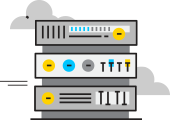Fragment overlap attack is a sophisticated cyber threat that targets network communication by manipulating packet fragmentation. It exploits the way data packets are divided into smaller fragments for transmission across networks. By intentionally overlapping these fragments, attackers can deceive network security systems and gain unauthorized access to sensitive information or disrupt communication.
The history of the origin of Fragment overlap attack and the first mention of it.
The concept of packet fragmentation dates back to the early days of the internet when different networks had varying maximum transmission unit (MTU) sizes. In 1981, the Transmission Control Protocol (TCP) specification RFC 791 introduced the concept of packet fragmentation to allow large packets to traverse networks with smaller MTUs. The process involves breaking large data packets into smaller fragments at the sender and reassembling them at the receiver.
The first mention of a potential security vulnerability related to packet fragmentation appeared in 1985 in an advisory titled “The fragility of TCP/IP” by Noel Chiappa. He highlighted that overlapping IP fragments could cause issues with packet reassembly.
Detailed information about Fragment overlap attack. Expanding the topic Fragment overlap attack.
A Fragment overlap attack involves deliberately crafting malicious packets to create overlapping fragments that exploit vulnerabilities in the packet reassembly process. When these malicious fragments reach their destination, the receiving system attempts to reassemble them based on the packet headers’ identification fields. However, the overlapping fragments lead to ambiguous data reassembly, causing confusion in the network stack.
In many cases, security devices, such as firewalls and intrusion detection systems, may fail to handle overlapping fragments correctly. They may either accept the malicious payload or drop the entire packet, leading to potential Denial-of-Service (DoS) situations.
The internal structure of the Fragment overlap attack. How the Fragment overlap attack works.
A Fragment overlap attack typically involves the following steps:
-
Packet Fragmentation: The attacker crafts specially designed packets, which may include excessive fragmentation or modified header fields to manipulate the reassembly process.
-
Transmission: These malicious packets are transmitted through the network towards the target system.
-
Packet Reassembly: The receiving system attempts to reassemble the fragments using information from the packet headers.
-
Overlapping Fragments: The malicious packets contain overlapping data, leading to confusion during the reassembly process.
-
Exploitation: The attacker leverages the ambiguities caused by overlapping fragments to bypass security measures or disrupt network communication.
Analysis of the key features of Fragment overlap attack.
Key features of Fragment overlap attacks include:
-
Stealth: Fragment overlap attacks can be challenging to detect due to their exploitation of packet fragmentation mechanisms, making them a potent tool for attackers.
-
Payload Concealment: Attackers can hide malicious payloads within overlapping fragments, making it difficult for security systems to analyze the full payload content.
-
Diverse Targets: Fragment overlap attacks can be used against a wide range of targets, including operating systems, firewalls, and intrusion detection/prevention systems.
Write what types of Fragment overlap attack exist. Use tables and lists to write.
There are several types of Fragment overlap attacks based on their objectives and techniques. Some common types include:
| Type | Description |
|---|---|
| Overlapping Offset | Manipulating the offset fields in fragment headers to create overlapping data. |
| Overlapping Length | Modifying the length fields in fragment headers to cause data overlap during reassembly. |
| Overlapping Flags | Exploiting flags in fragment headers, such as the “more fragments” flag, to create overlapping data. |
| Overlapping Payload | Concealing malicious payload within overlapping areas of the fragments. |
| Teardrop Attack | Sending overlapping fragments to crash the target’s operating system during reassembly. |
Usage of Fragment Overlap Attack:
-
Data Exfiltration: Attackers can use fragment overlap to bypass security controls and exfiltrate sensitive data from targeted systems.
-
Denial-of-Service (DoS): Overlapping fragments can cause resource exhaustion or crashes in target systems, leading to DoS situations.
Problems and Solutions:
-
Fragment Reassembly Algorithm: Implementing robust reassembly algorithms that can handle overlapping fragments without introducing vulnerabilities.
-
Intrusion Detection Systems (IDS): Enhancing IDS capabilities to detect and block malicious overlapping fragments.
-
Firewalls: Configuring firewalls to drop overlapping fragments or enforce strict fragment validation.
Main characteristics and other comparisons with similar terms in the form of tables and lists.
| Characteristic | Fragment Overlap Attack | Teardrop Attack |
|---|---|---|
| Attack Type | Exploits packet fragmentation | Sends malformed overlapping fragments |
| Objective | Gain unauthorized access or disrupt comm. | Crash the target OS |
| Impact | Unauthorized data access, DoS, breach | Operating system crashes |
| First Mention | 1985 | 1997 |
The future of Fragment overlap attacks depends on advancements in network security and mitigation strategies. Potential developments may include:
-
Improved Reassembly Algorithms: Future algorithms may be designed to handle overlapping fragments efficiently and securely.
-
AI-based Detection: AI-driven intrusion detection systems could better identify and block fragment overlap attacks.
How proxy servers can be used or associated with Fragment overlap attack.
Proxy servers can both facilitate and mitigate Fragment overlap attacks:
-
Facilitation: Attackers may use proxy servers to obfuscate their origin, making it harder to trace the source of Fragment overlap attacks.
-
Mitigation: Proxy servers with advanced security features can inspect and drop overlapping fragments, preventing attacks from reaching the target.
Related links
For more information about Fragment overlap attacks, please refer to the following resources:
Remember, staying informed about cybersecurity threats is crucial to safeguarding your network and data. Stay vigilant and keep your systems up-to-date with the latest security measures to defend against Fragment overlap attacks.




